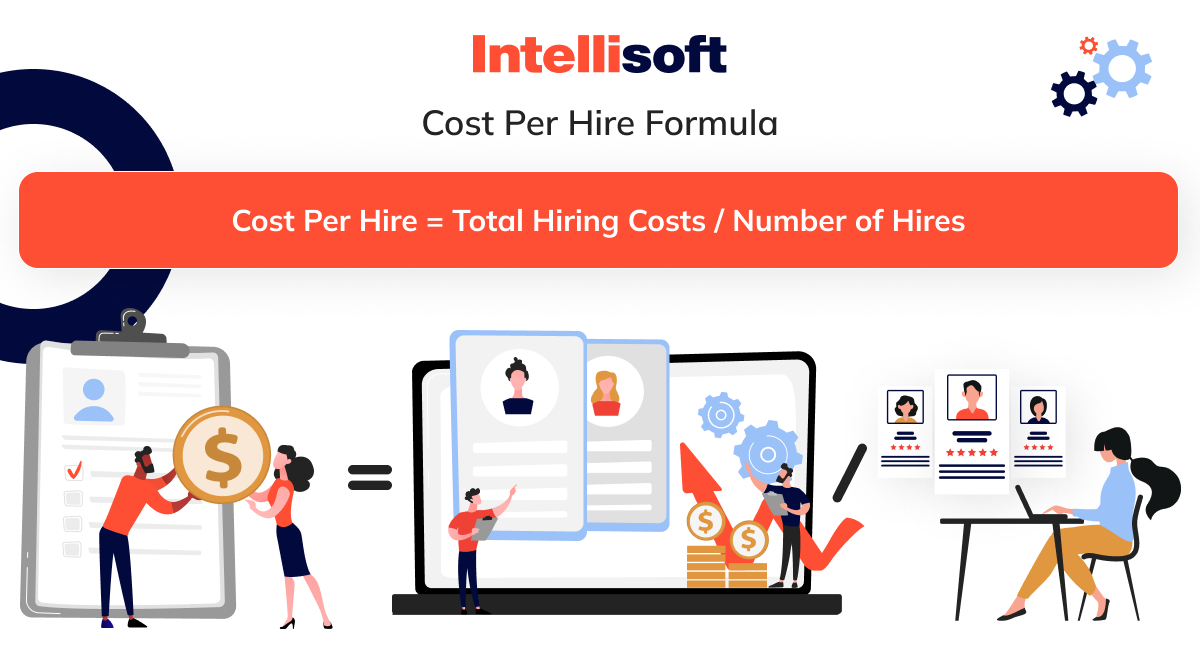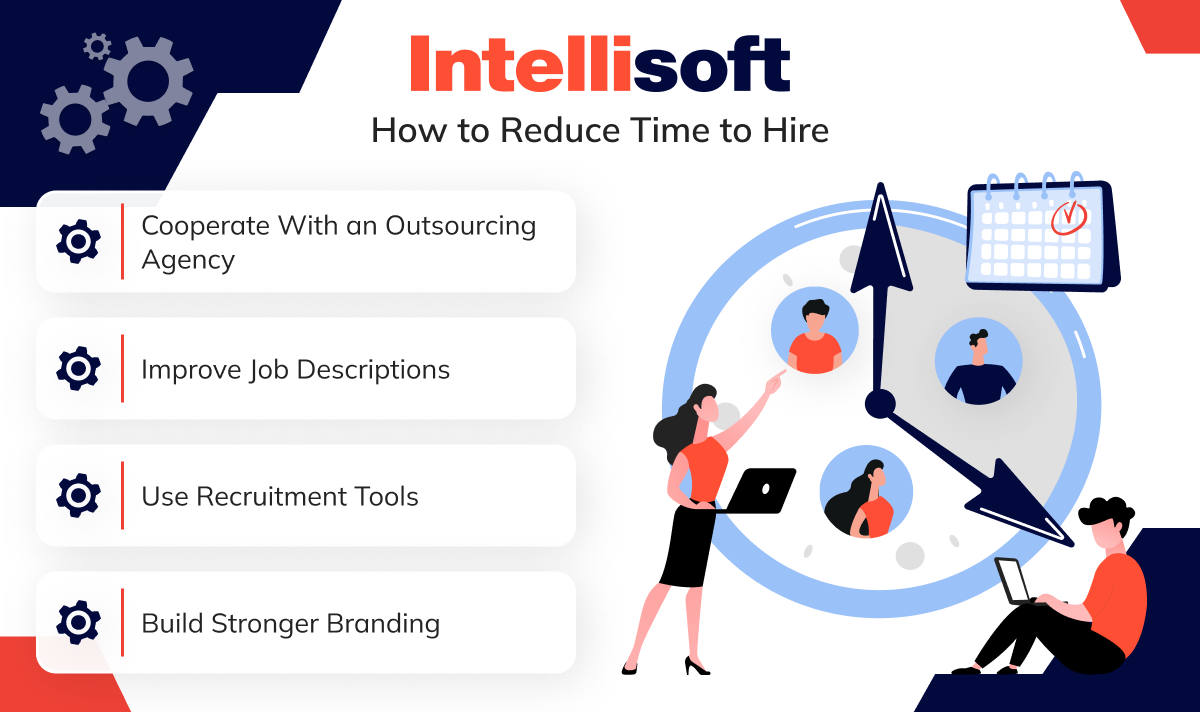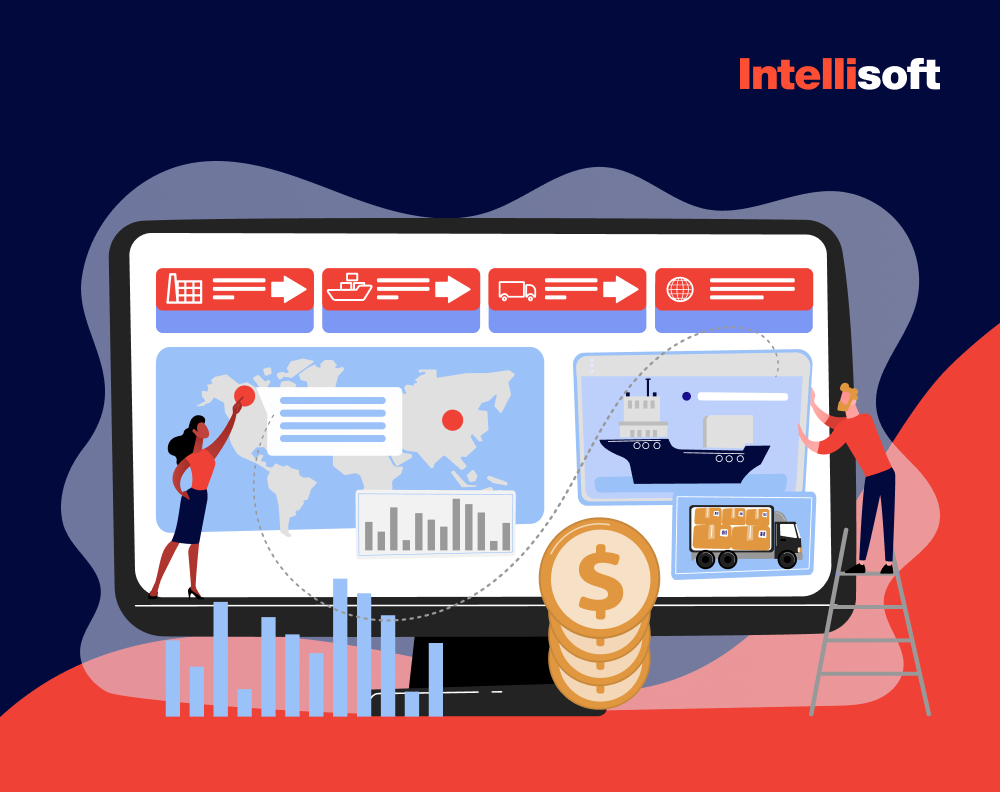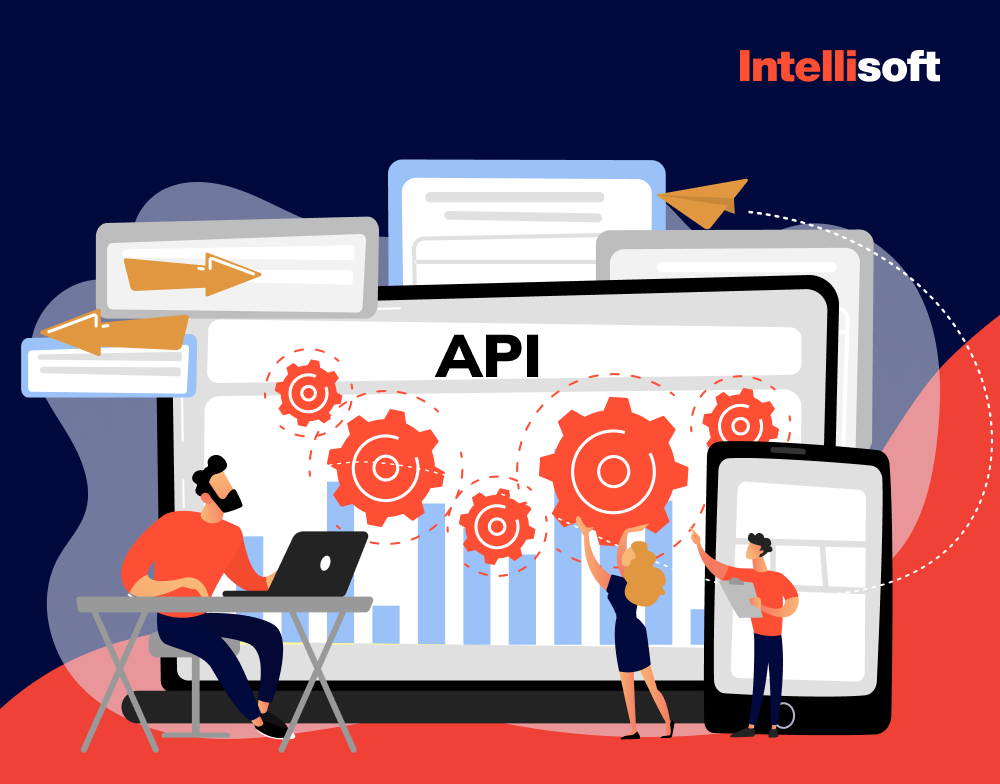Feeling the pressure to fill that open software developer position, but your time to hire feels like it’s stuck in slow motion? We’ve all been there. A slow hiring process can leave your team feeling overwhelmed and put your projects behind schedule. But how to hire part time employees quicker and get back to focusing on what you do best?
This article will be your guide to slashing your time to hire. We’ll break down the factors slowing things down and give you practical tips to find top talent faster. Imagine a streamlined hiring process that gets you the right fit without the headache – that’s the power we’re here to unlock.
IntelliSoft has over 15 years of experience specializing in speeding up software development hiring. Our methods can reduce your time to hire by 80% and completely eliminate the burden of pre-screening candidates. That means you can focus on building incredible products while we find the perfect match for your team.
Table of Contents
What Is Time to Hire?
What is a time to hire definition? Think of time to hire meaning as the stopwatch you start when you open a position and stop when you land your ideal candidate. It measures the entire hiring journey, from the moment applications roll into that happy “yes!” after you offer the job. Employers may consider the best time to hire new employees based on factors such as seasonal fluctuations in workload or when identifying a critical skills gap needing immediate attention.
Here’s an example: Let’s say you post a job opening on Monday. By Friday, you have 20 applications. It takes a week to review resumes and schedule interviews for the following week. Interviews take another week, and then there’s a two-day delay for reference checks. Finally, your ideal candidate accepts the offer on day 22 (almost a month later). That’s a time to hire of 22 days.
Now, imagine this whole process stretching on for weeks, even months. That’s where a high time to hire comes in. It can feel like you’re stuck, leaving your existing team stretched thin and putting projects on hold. But what if you could streamline your process, cutting down on delays and getting that perfect candidate on board faster?
Maybe you could cut down on resume review time or utilize online scheduling tools. Perhaps you could structure your interview process to be more concise. By implementing these changes, you could potentially get that same candidate on board in just two weeks. Why is time to hire important? That’s the magic of a new hire time to productivity – it allows you to fill open positions quickly, keep your team productive, and stay competitive in the talent market.
Why Measure Time to Hire?
Measuring time to hire is like having a diagnostic tool for your hiring process, helping you identify exactly where things are slowing down. Here’s why tracking this metric is so important:

- Identify Bottlenecks. A high time to hire can be a red flag that something’s amiss in your hiring pipeline. Is it taking an unreasonable amount of time to review resumes and shortlist candidates? Are approvals for interview requests getting bogged down by bureaucracy? Measuring your time to hire helps pinpoint these bottlenecks so you can streamline your process and get those top talents on board faster.
- Fill Roles Faster. Every day an open position remains vacant is a day your existing team is stretched thin. A shorter time to hire translates to quicker onboarding of new hires, allowing your team to get back to full capacity and keep projects on track. Reduced time to hire keeps everyone productive and motivated, avoiding that feeling of being perpetually behind schedule.
- Stay Competitive in the Talent Market. In today’s candidate-driven job market, the best talent doesn’t wait around. They have options. A shorter time to hire gives you a significant edge. You can identify and engage with qualified candidates before they get snatched up by the competition. By acting swiftly, you showcase your company’s efficiency and demonstrate a genuine interest in top performers.
How to Calculate Time to Hire?
So, you’re convinced measuring time to hire is a valuable tool. But how do you actually calculate it? Here’s a simple formula you can use:

There’s one key point to remember; we don’t count the day the job goes live since the position isn’t filled yet on that day.
Let’s put this time to hire formula into action with an example. Imagine you’re filling a PHP software developer position. Here’s a breakdown of the timeline:
- May 1st. You post the job description on your company website and job boards.
- May 5th. You’ve received 30 applications and started reviewing resumes.
- May 10th. After shortlisting candidates, you scheduled phone interviews for the following week.
- May 15th – 17th. Phone interviews are conducted.
- May 19th. Based on the phone interviews, you selected three candidates for in-person interviews. These are scheduled for the following week.
- May 23rd – 24th. In-person interviews took place.
- May 26th. References are contacted.
- May 27th. You sent an offer to your top candidate, and one accepted.
Time to Hire Benchmark Calculation
- Date Offer Accepted – May 27th
- Date Job Posting Went Live – May 1st
Time to Hire = May 27th – May 1st = 26 days
What Is the Average Time to Hire in Tech?
In 2023, the average time to hire skyrocketed – according to a recent study, the average wait time to fill a position ballooned to 44 days across all industries. The Energy and Defense sectors felt the squeeze the most, with hiring times exceeding a staggering 67 days. On the other hand, some industries with readily available talent pools, like retail and consumer goods, might see hiring times as low as 14 days.
The tech industry is known for its competitive talent pool and high demand for skilled professionals. This can translate to longer recruiting processes compared to other sectors.
While specific data for 2023 can be limited, various sources suggest a global time to fill tech positions (including developers, data scientists, and engineers) could be around 68 days, with the time to hire potentially around 33 days.
The U.S. and Canada might see a slightly shorter average time to fill at 56 days, while the time to hire remains similar at 33 days.
These numbers highlight the balancing act companies face in the tech hiring landscape. While streamlining the interview process itself might not be the primary bottleneck, factors such as a competitive talent pool and high demand can contribute to longer wait times. This can lead to open positions for weeks or even months, impacting project timelines and straining resources for existing teams.
Who can you hire to help with time management? While you can’t directly hire someone to shorten time-to-hire, consider a recruiting or outsourcing agency. They specialize in sourcing qualified candidates, streamlining the process, and potentially reducing the overall time it takes to fill your open positions.
Hiring Velocity and Other Key Time to Hire Metrics
While time to hire metric is crucial, it doesn’t give you the whole picture. What is a good time to hire metric, then? To gain a deeper understanding of your overall hiring efficiency, consider tracking these additional time to hire metrics alongside your time to hire:
Hiring Velocity
Think of hiring velocity as the speedometer for your recruitment process. It measures how quickly you’re filling open positions over a specific timeframe. Unlike time to hire, which focuses on one position at a time, hiring velocity looks at the bigger picture.
Here’s the formula to calculate hiring velocity:

For example: Let’s say you filled 5 positions within a 30-day period. Your hiring velocity would be:
Hiring Velocity = 5 Hires / 30 Days = 0.17 Hires per Day
A higher hiring velocity indicates a faster rate of filling open positions.
Cost Per Hire
This metric measures the total financial investment it takes to fill a single position. It includes expenses like advertising costs, recruitment agency fees, background checks, and interview travel expenses.
Here’s the formula to calculate cost per hire:

Tracking cost per hire helps you identify areas where you can streamline your process and potentially save money.
Interview-to-Hire Ratio
This metric tells you how many interviews it typically takes to find a suitable candidate for a role. A lower interview-to-hire ratio suggests a more efficient interview process.
Here’s the formula to calculate the interview-to-hire ratio:

For example: If you conducted 20 interviews and filled 4 positions, your interview-to-hire ratio would be:
Interview-to-Hire Ratio = 20 Interviews / 4 Hires = 5 Interviews per Hire
Offer Acceptance Rate
This metric calculates the percentage of candidates who accept your job offer. A low offer acceptance rate might indicate that your compensation package isn’t competitive or that the interview process hasn’t effectively communicated the role and company culture.
Here’s the formula to calculate the offer acceptance rate:

Related Readings:
- What Is Nearshore Outsourcing in Software Development?
- Everything You Need to Know About Team Extension and Dedicated Team Models
- Five Things To Look For In An Ideal IT Offshoring Destination
- Cost to Hire Talent: Staff Augmentation vs In-House Recruitment
- Vendor Selection Process: Essential Criteria for CTOs’ Strategic Choices
Time to Fill vs Time to Hire
Both time to fill vs time to hire are valuable recruiting metrics used by companies to make strategic decisions. However, they measure different aspects of the hiring process. Let’s focus on the difference between time to hire and time to fill.
Time to Hire
This metric focuses on the candidate’s journey, starting from the moment they apply to the moment they accept your offer. It reflects the efficiency of your process for evaluating and selecting the perfect fit. Here’s what’s included:
- Reviewing resumes and applications
- Conducting interviews (phone, in-person, etc.)
- Reference checks and background verifications
- Making and negotiating the job offer
Time to Fill
This metric takes a broader view, encompassing the entire recruitment cycle. It starts from the moment you advertise the open position and ends when a new hire accepts the offer. This includes everything involved in attracting and securing your ideal candidate:
- Creating and posting the job description
- Advertising the opening across relevant platforms
- Sourcing and attracting qualified applicants
- All stages included in time to hire
Why Does This Matter?
Distinguishing between time to hire vs time to fill allows you to pinpoint specific areas for improvement.
- High Time to Fill. A long time to fill might indicate issues in the initial stages, like unclear job descriptions, slow application review, or a lack of qualified candidates in your pool.
- High Time to Hire. A slow time to hire could suggest an overly complex interview process, delays in scheduling, or an offer that’s not competitive enough to attract top talent.
By tracking time to hire vs time to fill , you can develop targeted strategies. For instance:
- Shortened Time to Fill with Lengthened Time to Hire. This suggests efficient early recruiting stages, but potential bottlenecks in the hiring process itself, impacting candidate experience.
- Lengthened Time to Fill with Shortened Time to Hire. This might not be negative. Investing more time upfront in sourcing and attracting a larger pool of qualified candidates can streamline the hiring process later on, leading to better quality hires.
How to Reduce Time to Hire and Improve Hiring Efficiency
A slow hiring process can be frustrating – for you and for qualified candidates. The longer an opening remains unfilled, the more it strains your existing team and puts projects on hold. But fear not. Here are some effective strategies to slash your time to hire and streamline your recruiting process:

Cooperate With an Outsourcing Agency
Consider collaborating with a reputable outsourcing agency. They can leverage their expertise and network to source qualified candidates, saving you valuable time and resources during the initial stages of the hiring process.
However, keep in mind:
- Cost. Such agencies typically work under a Time and Material model, so it’s important to weigh the costs against the potential benefits.
- Fit. Choose an agency with a strong understanding of your industry and the specific skills you’re seeking.
Improve Job Descriptions
Your job description is your first impression on potential candidates. Make it count. Here are some tips:
- Clarity is Key. Clearly outline the role’s responsibilities, required skills, and desired experience.
- Highlight Your Company Culture. Showcase what makes your company unique and why someone would want to work there.
- Keywords Matter. Use relevant keywords that candidates are likely to search for when looking for a job.
By investing time in crafting a compelling job description, you’ll attract a higher caliber of applicants and reduce the time spent screening irrelevant resumes.
Use Recruitment Tools
There are numerous recruitment tools available to help automate time-consuming tasks and improve your hiring process efficiency. Here are a few examples:
- Applicant Tracking Systems (ATS). These platforms streamline the application process, allowing you to manage resumes, schedule interviews, and track candidate progress all in one place.
- Online Interview Platforms. These tools facilitate virtual interviews, making it easier to connect with geographically diverse candidates and streamline the scheduling process.
- Pre-employment Assessments. These can help you quickly identify candidates with the necessary skills and aptitude for the role.
Build Stronger Branding
Building a strong employer brand makes your company a more attractive destination for top talent. Here’s how:
- Showcase Your Company Culture. Highlight your company culture and values on your careers page and social media platforms.
- Invest in Employee Reviews. Encourage positive employee reviews on platforms like Glassdoor to showcase what it’s like to work at your company.
- Recognize and Reward Employees. A happy and engaged workforce speaks volumes. Promote employee achievements and offer competitive benefits to attract and retain top talent.
Reducing Time to Hire with IntelliSoft
Imagine this; you post a job opening, but instead of crickets, your inbox explodes with qualified candidates. Resumes fly in, interviews zip by, and suddenly, you’re celebrating a new hire – all within a record time frame. Sounds like a dream, right?
This dream can be your reality with IntelliSoft as your partner. We’re the software outsourcing ninjas who slash through the red tape and bureaucratic hurdles that slow down your recruitment process.
Here’s how IntelliSoft helps you reduce time-to-hire:
- Candidate Validation. We don’t just throw resumes at you. Our rigorous vetting process ensures you only meet the top contenders, saving you hours of wading through irrelevant applications.
- Targeted Sourcing. We’re like talent magnets, attracting the perfect fit for your role with laser focus. No more sifting through endless resumes – we bring the best straight to your door (or inbox).
- Scheduling on Steroid. Forget the back-and-forth email chains. Our scheduling tools streamline the process, getting you face-to-face with qualified candidates in record time.
- Data-Driven Decisions. We don’t just guess – we leverage data to guide you towards the ideal candidate. Say goodbye to gut feelings and hello to data-backed hiring decisions.
Stop wasting time on a slow hiring process. Contact IntelliSoft and experience the difference. Let’s turn your hiring nightmare into a record-breaking success story.







